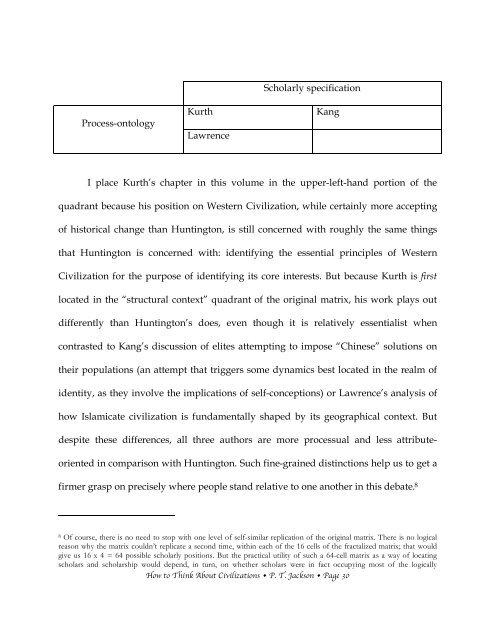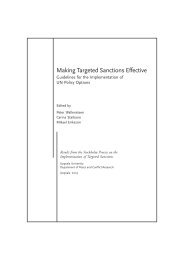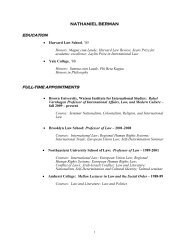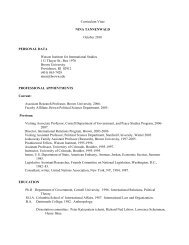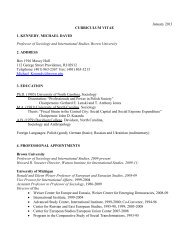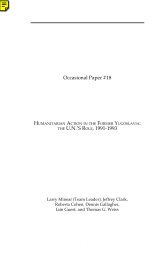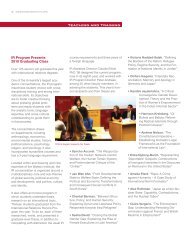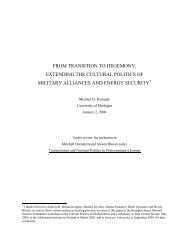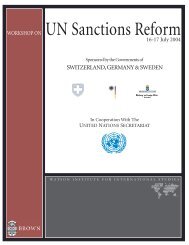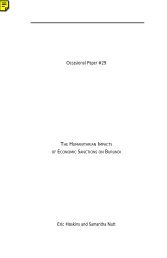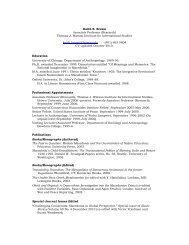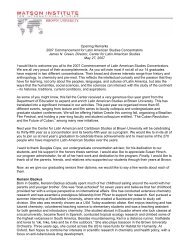How to Think About Civilizations - The Watson Institute for ...
How to Think About Civilizations - The Watson Institute for ...
How to Think About Civilizations - The Watson Institute for ...
Create successful ePaper yourself
Turn your PDF publications into a flip-book with our unique Google optimized e-Paper software.
Process-on<strong>to</strong>logy<br />
Kurth<br />
Lawrence<br />
Scholarly specification<br />
Kang<br />
I place Kurth’s chapter in this volume in the upper-left-hand portion of the<br />
quadrant because his position on Western Civilization, while certainly more accepting<br />
of his<strong>to</strong>rical change than Hunting<strong>to</strong>n, is still concerned with roughly the same things<br />
that Hunting<strong>to</strong>n is concerned with: identifying the essential principles of Western<br />
Civilization <strong>for</strong> the purpose of identifying its core interests. But because Kurth is first<br />
located in the “structural context” quadrant of the original matrix, his work plays out<br />
differently than Hunting<strong>to</strong>n’s does, even though it is relatively essentialist when<br />
contrasted <strong>to</strong> Kang’s discussion of elites attempting <strong>to</strong> impose “Chinese” solutions on<br />
their populations (an attempt that triggers some dynamics best located in the realm of<br />
identity, as they involve the implications of self-conceptions) or Lawrence’s analysis of<br />
how Islamicate civilization is fundamentally shaped by its geographical context. But<br />
despite these differences, all three authors are more processual and less attributeoriented<br />
in comparison with Hunting<strong>to</strong>n. Such fine-grained distinctions help us <strong>to</strong> get a<br />
firmer grasp on precisely where people stand relative <strong>to</strong> one another in this debate. 8<br />
8 Of course, there is no need <strong>to</strong> s<strong>to</strong>p with one level of self-similar replication of the original matrix. <strong>The</strong>re is no logical<br />
reason why the matrix couldn’t replicate a second time, within each of the 16 cells of the fractalized matrix; that would<br />
give us 16 x 4 = 64 possible scholarly positions. But the practical utility of such a 64-cell matrix as a way of locating<br />
scholars and scholarship would depend, in turn, on whether scholars were in fact occupying most of the logically<br />
<strong>How</strong> <strong>to</strong> <strong>Think</strong> <strong>About</strong> <strong>Civilizations</strong> • P. T. Jackson • Page 30


